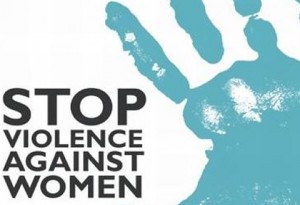Study finds 41.6% of women in Ghana have been victims of intimate partner violence
 The Ghana Statistical Service (GSS) says two in every five women, representing 41.6 per cent women aged 15 to 49 years have been victims of Intimate Partner Violence (IPV).
The Ghana Statistical Service (GSS) says two in every five women, representing 41.6 per cent women aged 15 to 49 years have been victims of Intimate Partner Violence (IPV).
It said the women had experienced at least one form of emotional, physical or sexual IPV.
A statement issued by the GSS said this in preliminary findings from the 2022 Ghana Demographic and Healthy Survey (GDHS) Report.
It said in all, 35.2 per cent of women had experienced emotional violence at least once, 22.7 per cent physical violence at least once, and 11.2 per cent ent sexual violence at least once.
The statement said more than half, representing 53.4 per cent in the Savannah Region, had experienced IPV, the highest recorded, followed by the Central and the Ahafo Regions with 44.0 per cent, and Volta Region 43.6 per cent.
According to GSS, the lowest rate, 26.3 per cent of IPV, was recorded in the Bono Region.
It said more than two in every five with primary education, 44.1 per cent or no education 42.9 per cent, had experienced IPV, almost twice that of women with more than secondary education 23.0 per cent.
The findings indicated that IPV experience varied by employment status as well.
Women employed for cash reported the highest frequency of IPV with 39.5 per cent and about 10 percentage points higher than women employed, but not for cash, 28.9 per cent or not employed at all, 29.1 per cent.
It said the most frequent form of sexual violence, 8.2 per cent, was being forced to have sexual intercourse, and physical violence, being slapped, 11.6 per cent.
For emotional violence, 27.1 per cent was being insulted or made to feel bad about herself.
The statement said overall, one in every three (33.2 per cent) women aged 15 to 49 years in Ghana had experienced physical violence since age 15 years.
It said one in every ten (12.2 per cent) women in the age group reported experiencing physical violence often or sometimes in the 12 months preceding the survey, and 6.8 percent experienced physical violence while pregnant.
The findings showed that Central Region with 44.6 per cent had the highest percentage of women, who had experienced physical violence since age 15 followed by the Savannah 42.9 per cent and Volta 40.2 per cent.
It said the 23.7 per cent each, lowest rates of physical violence were recorded in the Upper West and North East Regions.
The statement said about three in every five (63.2 per cent) women, who had experienced physical violence, reported the violence was committed by current (33.2 per cent) or former (29.9) per cent husbands or intimate partners, the leading perpetrators of violence against women.
It said fathers representing 11.9 per cent, mothers 11.9 per cent, and siblings 10.per cent were the next highest categories of persons committing physical violence.
The findings said women also reported physical violence from non-relatives, including teachers 4.9 per cent, schoolmates 4.6 per cent, employers or work colleagues 1.0 per cent and other persons 6.1 per cent.
It showed that 14.1 percent of women aged 15 to 49 years had experienced sexual violence and one in five women in the Volta 22.3 per cent, Central 19.6 cent and Savannah Regions, 19.6 reported ever experiencing sexual violence, the highest recorded.
The statement said progress toward eliminating violence against women had been slow in the past decade.
It said beween 2008 and 2022, experience of physical violence since age 15 declined from 36.6 to 33.2 percent, experience of sexual violence declined from 18.8 to 14.4 percent, and physical violence against pregnant women increased from 5.2 to 6.8 percent.
International Day for the Elimination of Violence against Women is commemorated annually on 25th November to create awareness and advocacy on the prevention and elimination of violence against women and girls around the world.
It said the 2022 GDHS Report would be released in December 2023.
The statement said the 2022 GDHS Key Indicators Report, which presented statistics on selected health indicators, was released earlier this year.
Source: GNA
